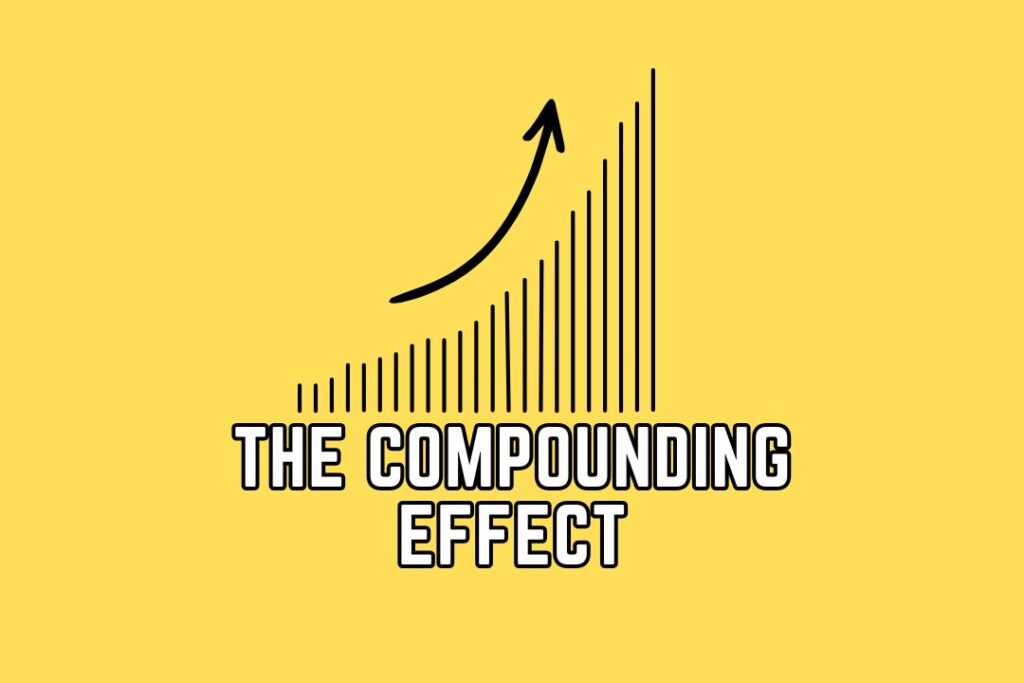The Compounding Effect: How Small Actions Shape Your Destiny

Published on: July 27, 2025
Have you ever wondered how seemingly insignificant daily choices can lead to dramatically different life outcomes over time? We often associate the term “compounding” with financial investments, where small sums grow exponentially over the years. But this same powerful principle applies not just to your money, but to your habits, your health, your relationships, and ultimately, your entire life. The compounding effect is a silent, relentless force that constantly shapes your future with every decision you make, no matter how small.
Today, we delve into a compelling tale of three friends – Ben, Jay, and John – whose lives, initially identical, diverge dramatically over the course of just one year. Their story is a vivid illustration of how the tiny, almost imperceptible actions taken (or not taken) each day can accumulate into a profound transformation, for better or for worse.
The Setup: Three Paths Diverge
At the beginning of our story, Ben, Jay, and John are all at similar junctures in their lives. They share similar aspirations, challenges, and the everyday routines that define most of us. However, each of them makes a subtle, yet ultimately pivotal, decision about how they will approach the next 12 months.
Ben: The Status Quo Seeker. Ben is content. He believes in the adage, “if it ain’t broke, don’t fix it.” His life is comfortable and predictable, and he sees no compelling reason to alter his established routine. He’s not engaging in overtly destructive habits, but he’s also not seeking growth. Ben represents the vast majority who simply let life happen to them, assuming that consistency in inaction will yield consistent results.
Jay: The Architect of Small Gains. Jay, on the other hand, yearned for a little more. He wasn’t looking for a radical overhaul, but rather a gentle nudge towards improvement. His commitment was modest: 10 minutes of reading self-improvement books every morning and a 20-minute walk every evening. That’s a mere 30 minutes dedicated to personal growth and physical well-being each day. Jay understood that consistency, even in small doses, could be a powerful catalyst.
John: The Unwitting Saboteur. John also decided to make a change, but his motivation was rooted in convenience and a misguided notion of health. He started cooking at home, believing it was a healthier alternative to eating out. However, his culinary adventures quickly devolved into a quest for indulgent, unhealthy recipes found online. He convinced himself he was being proactive, but his choices were steadily introducing a cascade of detrimental effects into his life. John exemplifies how even seemingly positive intentions can lead to negative compounding if the underlying choices are flawed.
These initial decisions, seemingly insignificant in the grand scheme of a day, set each man on a trajectory that would, in time, lead them to vastly different destinations. The stage was set for the silent power of compounding to unfold.
The Invisible Months: When Nothing Seems to Change
The first few months of our story are perhaps the most crucial, and often, the most disheartening. For Ben, Jay, and John, the initial period yielded no visible, tangible results. Months one, two, and three passed with little to no discernible difference in their lives. Jay, despite his consistent reading and walking, didn’t suddenly get a promotion or shed significant weight. John, despite his unhealthy culinary experiments, didn’t immediately gain 20 pounds or suffer from chronic headaches. Ben remained exactly as he was, perhaps even feeling validated that his inaction was just as effective as Jay’s efforts.
This is the critical juncture where most people falter. We live in a world that champions instant gratification. We expect immediate returns on our investments, whether they are financial, emotional, or physical. When we don’t see rapid progress, our motivation wanes, and we often abandon our efforts, concluding that they were pointless. The truth, however, is that the compounding effect operates silently, beneath the surface, during these invisible months. It’s like planting a seed; you don’t see the roots growing, but they are diligently spreading, establishing a foundation for future growth. This period requires immense faith in the process, a belief that consistent, small actions will eventually yield significant results, even when the evidence is scarce.
The Tipping Point: When Small Changes Become Visible
As the calendar pages turned past the six-month mark and approached month nine, subtle shifts began to emerge. These changes were not dramatic, but they were undeniable, particularly to those paying close attention.
For Jay, the cumulative effect of his daily habits started to manifest. The knowledge gleaned from dozens of books began to integrate into his thinking, influencing his decisions at work and in his personal life. The 20-minute walks, initially a chore, had become a source of mental clarity and physical energy. He found himself more focused, more articulate, and more resilient. He wasn’t just reading about self-improvement; he was embodying it. These subtle internal changes were the precursors to the external transformations that would soon become apparent.
Conversely, John’s seemingly harmless choices were also reaching a tipping point. The constant consumption of unhealthy foods began to take its toll. He started experiencing persistent headaches, a general sluggishness, and a noticeable decline in his mood. His initial enjoyment of cooking had been replaced by a growing sense of discomfort and irritability. These were the early warning signs of negative compounding, a silent accumulation of detrimental effects that would soon erupt into full-blown problems.
Ben, meanwhile, remained in his comfortable stasis. The world around him was changing, but his personal landscape remained stubbornly the same. He was neither improving nor declining significantly, simply existing in a state of perpetual sameness. The tipping point for Jay and John highlighted the stark reality that even inaction is a choice, and it too has a compounding effect, often leading to missed opportunities and stagnation.
The Revelation: 12 Months Later
And then, the 12-month mark arrived. The full, undeniable power of compounding was laid bare, revealing vastly different realities for our three protagonists. The subtle currents of their daily choices had, over time, converged into powerful rivers, carrying them to dramatically distinct destinations.
Ben: The Unchanged. Ben, true to his initial decision, found himself exactly where he started. His life was a mirror image of the previous year – no better, no worse, just… static. He had maintained the status quo, and in a world that constantly evolves, maintaining the status quo often means falling behind. He missed the opportunity for growth, simply by choosing not to choose.
Jay: The Transformed. Jay, on the other hand, was unrecognizable from his former self. Those 10 minutes of reading each morning had accumulated into the wisdom of approximately 18 books. He didn’t just passively consume information; he actively implemented the learning. This newfound knowledge and clarity translated into tangible improvements across every facet of his life. His job satisfaction soared, leading to a well-deserved promotion. His relationships at home flourished, becoming healthier, more communicative, and deeply supportive. The consistent 20-minute walks, combined with the mental fortitude gained from his reading, helped him shed 20 pounds, boosting his physical health and confidence. Jay was now living a truly fulfilling life, a vibrant testament to the profound impact of consistent, positive micro-actions.
John: The Declined. John’s story is a cautionary tale. His pursuit of instant gratification through unhealthy cooking had led to a devastating outcome. He gained a significant 25 pounds, and the constant influx of processed, calorie-dense foods wreaked havoc on his physical and mental well-being. Persistent headaches became a daily torment, fueling irritability and leading to frequent, bitter arguments with his boss and his wife. In his profound misery, John lashed out, blaming everyone around him – his boss, his wife, his relatives – for his unhappiness. He had, tragically, messed up his life, all because of a series of small, seemingly harmless choices that compounded into a destructive force. His initial desire for convenience had paved a path to profound regret.
The Science Behind Compounding
The story of Jay and John is a powerful narrative, but it’s not just a story; it’s a real-world demonstration of a fundamental principle. The compounding effect is not magic; it’s mathematics. When you improve by just 1% each day, you’ll be 37 times better by the end of the year. Conversely, a 1% decline each day will leave you at nearly zero. This is the exponential nature of compounding.
Negative habits often compound faster and more dramatically than positive ones. This is because negative habits often have a ripple effect, creating a cascade of negative consequences. For example, John’s unhealthy eating didn’t just lead to weight gain; it affected his mood, his relationships, and his professional life. Positive habits, on the other hand, often build on each other in a more subtle, synergistic way. Jay’s reading and walking didn’t just improve his knowledge and physical health; they also enhanced his mental clarity, his decision-making, and his overall well-being.
Practical Applications
So, how can you harness the power of compounding in your own life? Here are a few practical steps:
- Identify your keystone habits: These are the small, foundational habits that can trigger a chain reaction of positive change. For Jay, it was reading and walking. For you, it might be meditating, journaling, or practicing gratitude.
- Start ridiculously small: The key to consistency is to make your new habits so easy that you can’t say no. Want to read more? Start with one page a day. Want to exercise? Start with a 5-minute walk. The goal is to build momentum, not to achieve a massive transformation overnight.
- Track your progress: Tracking your habits can be a powerful motivator. It provides tangible evidence of your consistency and helps you stay on course, especially during the
invisible months when results aren’t immediately apparent.
- Be patient and persistent: The compounding effect is a long game. There will be days when you feel like giving up, when progress seems nonexistent. This is precisely when consistency matters most. Trust the process, and know that your small efforts are accumulating, even if you can’t see it yet.
- Beware of negative compounding: Just as positive habits can build, so too can negative ones. Be mindful of seemingly harmless choices that, when repeated, can lead to detrimental outcomes. John’s story is a stark reminder that convenience and instant gratification can be insidious traps.
Conclusion
The story of Ben, Jay, and John is a powerful reminder that our lives are not shaped by grand, infrequent gestures, but by the sum total of our daily habits. The compounding effect is always at play, whether we are conscious of it or not. Every small decision, every repeated action, is either building towards the life you desire or chipping away at it.
The choice, ultimately, is yours. Will you be a Ben, content with stagnation? A Jay, meticulously building a life of fulfillment through consistent, positive action? Or a John, unwittingly sabotaging your future with seemingly harmless, yet ultimately destructive, choices?
Start today. Identify one small, positive action you can take consistently. Don’t wait for motivation; create it through action. Your future self will thank you for embracing the silent, powerful force of compounding. The destiny you seek is not a distant dream; it’s the inevitable outcome of the small, consistent steps you take, starting now.
✅ Ready to Build Better Habits?
Start tracking your small wins with HabitPills — the habit tracker built for real life.
→ Track your habits. Stay consistent. See results.
Want more? Visit our blog.


